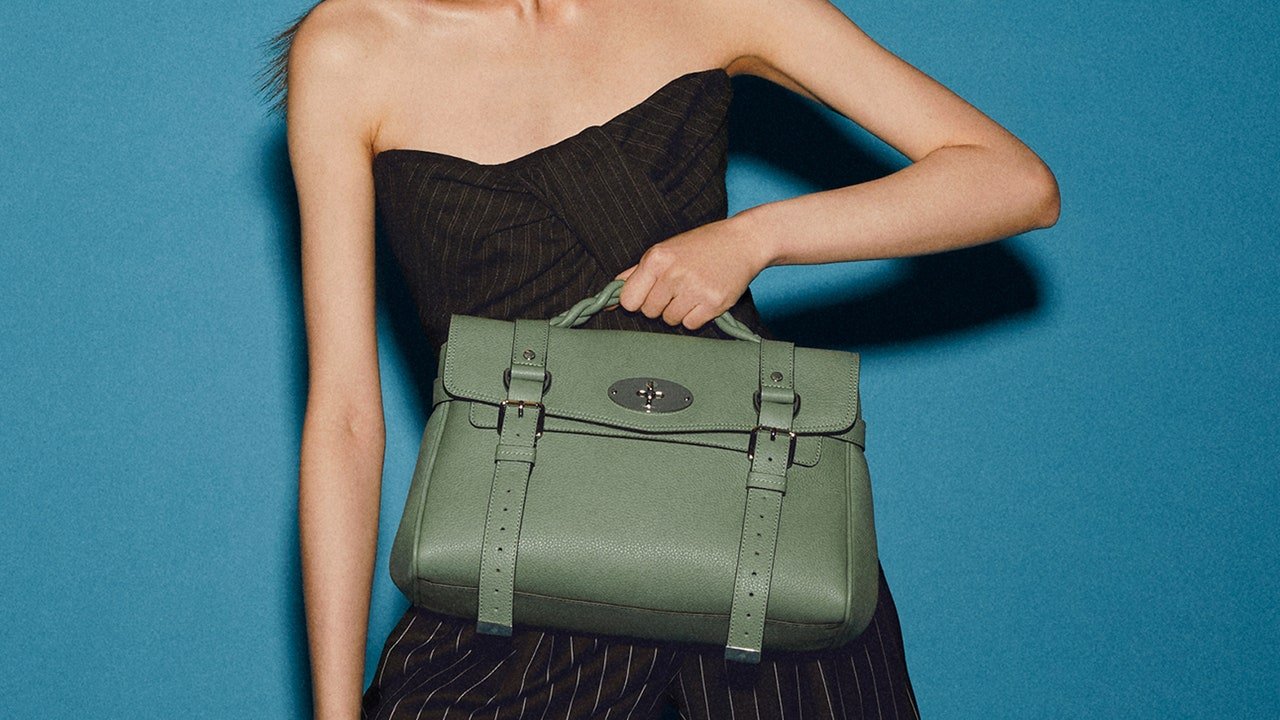It was 2009 when Mulberry introduced the Alexa bag, a soft, mid-sized leather satchel inspired by Alexa Chung’s “preppy hipster-meets-London scenester style.” It was an It bag for an It girl, snapped up by women around the world who aspired to her look. The £750 bag was so successful, in fact, that it was credited with carrying Mulberry through the recession.
Within a few years, though, the Alexa began to dip in popularity as trends turned to sleeker, more structured bags, and in 2016, it was discontinued. In recent seasons, as pillow bags and squishy pouches re-entered the market, Mulberry saw an opening; a new-and-improved Alexa was relaunched circa November 2020. “We did it in a modern way,” Thierry Andretta, Mulberry’s CEO, explains.
The 2020 version—partly timed to the brand’s 50th anniversary—comes in leather produced in gold-standard, environmentally-accredited tanneries, which typically use plant-based treatments rather than harmful chemicals like chromium, and was hand-made in the brand’s factories in the United Kingdom. “You can still have an ‘it bag,’ but it [has to] fit what customers are asking for,” Andretta says, adding that Mulberry’s young shoppers in China are particularly curious about the brand’s leather processes and sustainable credentials. “There’s really been a change.”
In the 2010s, a handbag was primarily a status symbol, one that aligned you with a brand (or a celebrity), likely came with a flashy logo or hardware, and would be traded for the next must-have thing in a season or two. Now, that sort of conspicuous consumption is falling out of favor, and consumers want to know more about what they’re buying and how it affects the world around them.
Mulberry is keeping pace with its new “Made to Last” manifesto that outlines its rigorous plans for the next nine years (as 2030 is considered the year climate change becomes irreversible). On the to-do list is scaling Mulberry’s repairs and buy-back programs; achieving net-zero carbon emissions by 2035; establishing a “hyper-local, farm to finished product” supply chain with U.K. cattle farmers and European tanneries; and developing the world’s “lowest-carbon leather” by investing in regenerative, carbon-sequestering farming practices. In the coming seasons, the Alexa may not be simply “sustainable,” but could actually make a positive impact.
Mulberry’s manifesto opens with a question: “Can a bag save the world?” Maybe not—but it could at least save fashion. Luxury houses are now looking at handbags as a place to experiment with sustainable materials and make a statement about fashion’s future: Consider Hermès’s mycelium “leather” satchel made in partnership with MycoWorks, or the recycled leather bags in Balenciaga’s pre-fall 2021 collection. Stella McCartney and Kering (the owner of Gucci, Bottega Veneta, and Balenciaga, among others) are working with MycoWorks competitor Bolt Threads on a mycelium leather of their own, and will likely launch handbags in the material this year. They’ll be It bags, for sure—but they’ll spark a very different kind of conversation.
